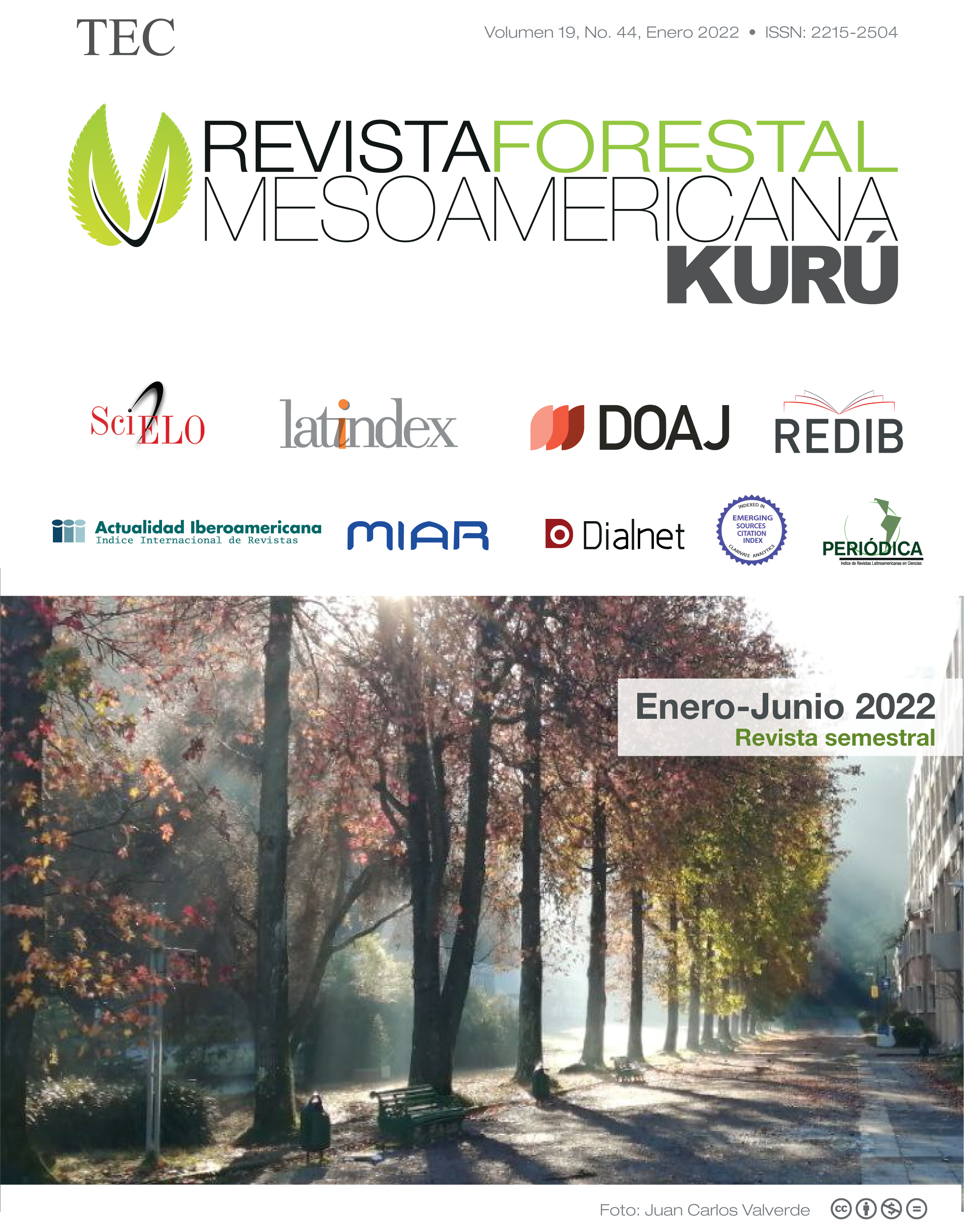Physical-mechanical properties of CLT Cross Laminated Timber manufactured with Tectona grandis and Gmelina arborea from Costa Rican forest plantations
Main Article Content
Abstract
Physical-mechanical properties of three-layer counter-laminated boards (CLT) were determined, made with Tectona grandis and Gmelina arborea wood, from forest plantations. Two types of adhesive were used, isocyanate polymer emulsion (EPI) and pre-catalyzed vinyl acetate modified with 3% nanoclay (PVA-na). They applied two treatments to activate the adhesion surface: sanding and impregnation with acetone. The results showed that, by applying both adhesives (EPI and PVA-na) and both surface activation treatments (sanding and acetone), the CLT board with T. grandis obtained better mechanical performance (dynamic elastic modulus, shear stress, and parallel compression) and density than the CLT board with G. arborea wood. Regarding moisture absorption and moisture content between the CLT boards, no statistically significant difference was obtained. CLT boards built with both species comply with the mechanical properties (shear stress and parallel compression) and density established by the international standard ANSI / APA PRG 320 CLT.
Article Details

This work is licensed under a Creative Commons Attribution-NonCommercial-NoDerivatives 4.0 International License.
Revista Forestal Mesoamericana Kurú is licensed under CC BY-NC-ND 4.0
Al enviar un artículo a la Revista Forestal Mesoamericana kurú (RFMK), los autores ceden los derechos patrimoniales a la editorial de la RFMK una vez su manuscrito haya sido aprobado para publicación, autorizando a la RFMK a editarlo, reproducirlo, distribuirlo, y publicarlo en formato físico y/o electrónico. La titularidad de los derechos morales sobre los trabajos objeto de esta cesión seguirá perteneciendo a los autores.

